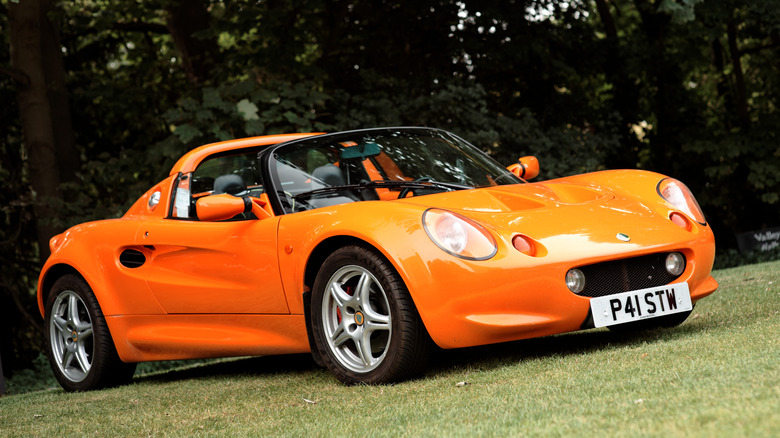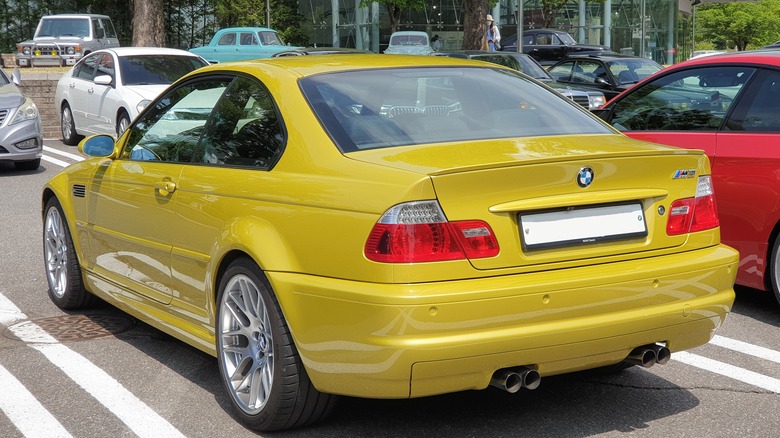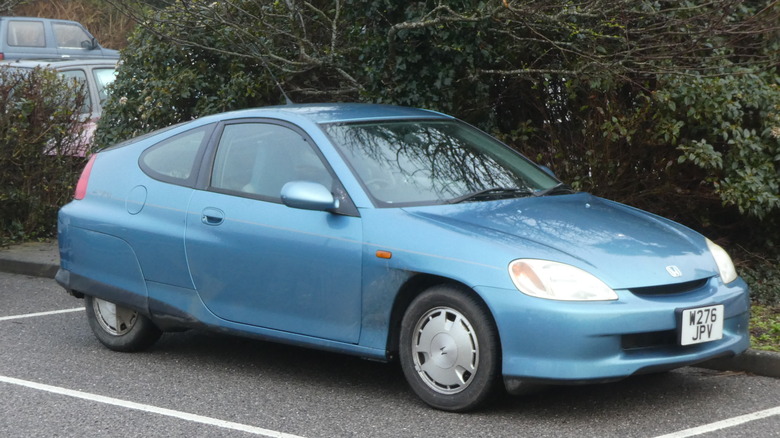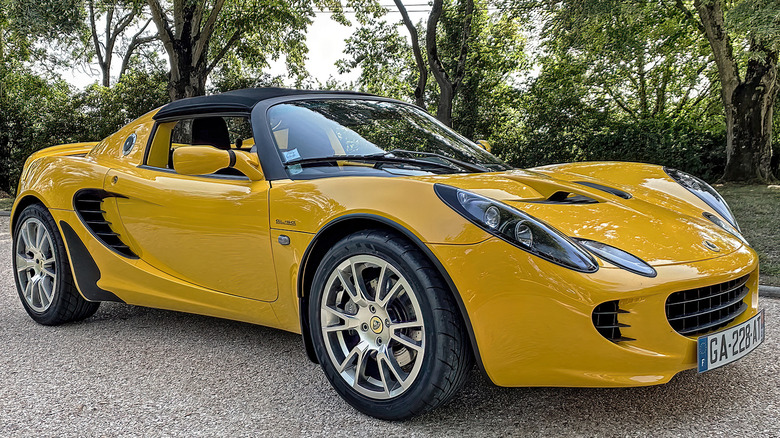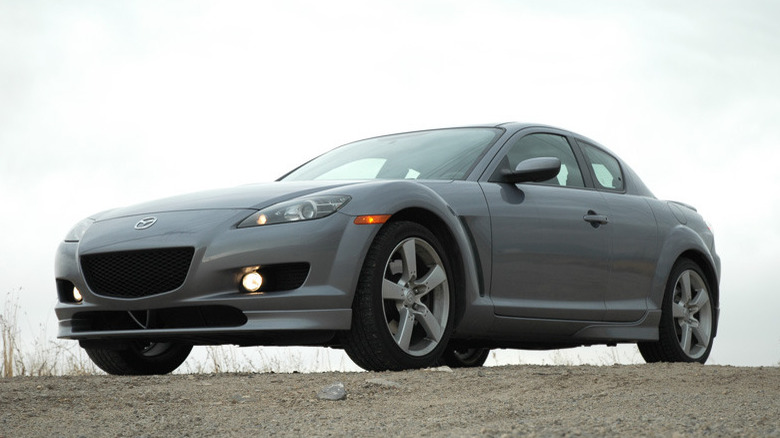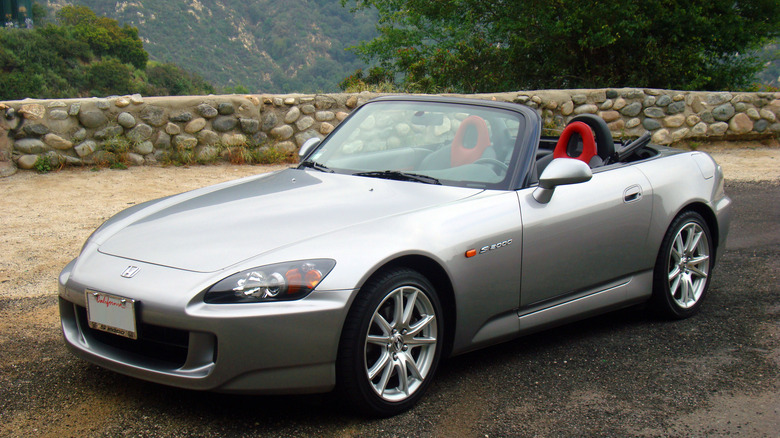5 Cars From The 2000s That Could Become Future Classics
The exact point at which a car qualifies as a "classic" is widely debated, but consensus falls in the vicinity of 20 to 25 years old. Stepping away from any strict age guidelines, a classic car usually has desirability due to attractive styling, an innovative design, and exhilarating performance. We're almost 25 years into the 21st Century, meaning that cars made as recently as 2000 are already approaching classic territory and could soon be comfortably there.
Cars from that era might not have the space-age design of some 1950s models or the beautiful lines of some of the muscle cars from the 1960s and '70s, but some cars that are just pulling into the historical space reserved for classics have undeniable appeal for car enthusiasts and collectors. Let's gaze into our crystal ball and try and divine which models from the early aughts will be highly coveted in the years to come.
[Featured image by pyntofmyld via Wikimedia Commons | Cropped and scaled | CC By 2.0]
BMW E46 M3
The BMW 3 Series is far from the German automaker's most luxurious model, but the E46 version of that line that debuted in 1997 marked significant strides forward in terms of comfort and safety. The E46 was the fourth generation of the 3 Series and ran through the 2006 model year. Over that span, E46 body styles included a sedan, a coupe, a convertible, and a station wagon.
The high-performance M3 variant debuted late in 2000 as a 2001 model with a 3.2 liter S54 inline-six engine and came as a coupe or convertible. Each cylinder on the M3's S54 had its own computer-controlled throttle body, and buyers had their choice of two six-speed transmissions: a regular stick shift or an automated manual.
The E46 M3's straight-six put out 333 horsepower and 311 lb-ft of torque, enough to get from 0-60 in just 4.5 seconds. An upgraded interior, suspension, and exhaust system also separated the M3 from the standard E46 3 Series models.
If you're interested in an E46 M3, you might want to act quickly. Classic.com lists the average sale price at a little more than $31,000 over the last five years, but for sales in the last six months that average jumps to beyond $38,000.
[Featured image by Damian B Oh via Wikimedia Commons | Cropped and scaled | CC By-SA 4.0]
Honda Insight
Honda started the hybrid era in the United States in 1999 with the Insight, two years after Toyota debuted the Prius in Japan. The Insight's first generation ran from the 2000 to 2006 model years, before it went on a brief hiatus until 2010.
The Insight's brushless electric motor powered the car at low speeds and recharged the nickel metal-hydride battery during deceleration. The main engine was a 1.0-liter three-cylinder, and with assist from the electric motor it could produce 73 horsepower. The hybrid powertrain delivered a combined fuel economy of 54 miles per gallon, which exceeds the Corporate Average Fuel Economy standard of 49 miles per gallon for the 2026 model year.
With at least a dozen states in the U.S. and the entire European Union set to ban gas and diesel cars by 2035, hybrids may soon be the only option for drivers not ready to go fully electric because of concerns about an insufficient charging infrastructure. It remains to be seen whether hybrids will be exempted from the looming internal combustion bans, but if that happens, the Insight could be poised for a resurgence in the next decade or so.
[Featured image by Andrew Bone via Wikimedia Commons | Cropped and scaled | CC BY 2.0]
Lotus Elise S2
Lotus presented the Elise to the public at the 1995 Frankfurt Motor Show and sent it to dealerships as a 1996 model. It was named after Lotus chairman Romano Artioli's granddaughter Elisa and went on sale for under 19,000 British pounds (not quite $30,000 USD).
The Elise had an aluminum chassis and fiberglass body that kept its weight well below the one-ton mark, and the 1.8 liter, 16 valve inline four-cylinder engine put out 118 horsepower and 122 lb-ft of torque. The Elise Series 2 appeared in 2002 and the Series 3 followed in 2011.
Robert Farago of The Truth About Cars compared the Elise Series 2's nimble handling and zippy throttle response to that of a go-cart, writing, "you've got a road car that you can drive like a go-kart, using your entire body to aim the machine with zero-delay, laser-guided precision." You can still get that precision for a reasonable sum. Classic.com lists 233 sales of Elise Series 2s in the past five years, with an average price of $42,556.
[Featured image by Thierry & Didier Descouens via Wikimedia Commons | Cropped and scaled | CC By-SA 4.0]
Mazda RX-8
First introduced in 2003, the Mazda RX-8, earned a spot on our list of six of the best rotary engine-powered cars of all time, but emissions and fuel consumption problems with its 13B twin-rotor engine led to the RX-8 being dropped in 2012. The same power plant that doomed the RX-8 has made it a cult favorite since its discontinuation, particularly examples that came with a six-speed manual transmission paired with an engine tuned to deliver 238 horsepower. The RX-8's rear doors add to its quirkiness, and the multi-link suspension helped smooth out bumps in the road.
Options in the 2004 model year included a $2,000 navigation system and a GT package for twice that price that included heated seats with leather trim, traction control, and a Bose sound system. Mazda produced more than 192,000 RX-8s before abandoning the rotary engine, making them reasonably affordable and easy to find on the secondhand market. Classic.com lists 86 RX-8 sales in the past five years at an average price of $13,275.
[Featured image by Renesis via Wikimedia Commons | Cropped and scaled | CC By-SA 3.0]
Honda S2000
Honda earns a second spot on this list with the S2000, a fun roadster that took its model designation from its engine's displacement in cubic centimeters. The S2000 was made between the 2000 and 2009 model years, and the 2.0-liter four-cylinder lacked a turbo or supercharger yet still produced 240 horsepower and could rev all the way up to 8,900 rpm.
In his review of the 2000 model, Car and Driver's Larry Webster noted that only four other cars available in the U.S. at the time had a better power-to-weight ratio than the S2000: the Corvette, the Dodge Viper R/T, the Ferrari F355 Spider, and the Plymouth Prowler. He praised the S2000's handling and six-speed manual transmission, noting that "the shifter feels oh-so-sports-car perfect." It tested at 6.8 seconds from 0-60, but he felt a proper break-in period would cut more than a second from that time.
In 2004, North American buyers got an updated S2000 with a 2.2-liter I-4, and from 2007 through the end of the line a CR (Club Racer) version was offered, with stiffer suspension, a removable hardtop, and a 250-horsepower version of the 2.2-liter engine. Classic.com notes an average sale price of just over $66,000 for S2000 CRs, more than twice the going rate for a first-gen S2000.
[Featured image by Rich Niewiroski Jr. via Wikimedia Commons | Cropped and scaled | CC By 2.5]
